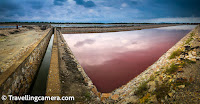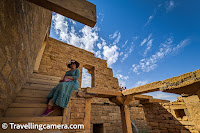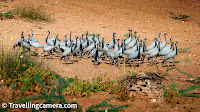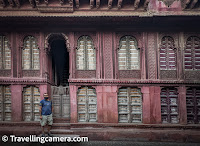Sisodia Rani ka Bagh, or the royal garden of Jaipur, is located just outside the city of Rajasthan and is a garden with a history that dates back to the 18th century. A beautifully manicured garden, it was built as a token of love and reverence for his queen, Sisodia Rani, who was a princess belonging to the Sisodia clan of Udaipur, at the behest of Maharaja Sawai Jai Singh II in the year 1728. The garden is a perfect blend of Mughal and Indian architectural styles, which makes it one of the most romantic sites in Jaipur.
Historical Importance
It was named after the royal lady Sisodia Rani, from Udaipur in Rajasthan. Her marriage with Maharaja Sawai Jai Singh II was a political alliance between the Rajput clans of Udaipur and Jaipur. This garden was constructed by the Maharaja as a peaceful abode for his dear queen, where she could enjoy peace away from the political machinations of the royal court. The Garden symbolizes not just an expression of love but also an expression of pompous royal lifestyle of Rajputana.
Architectural Features
Sisodia Rani ka Bagh is designed in a multi-tiered form of structure, each tier well augmented with fountains, pavilions, and water channels. The architectural design of the garden, in general, is an enchanting composition of Mughal and Rajasthani styles with intricate designs that vividly display the cultural richness of the times.
Key Architectural Features:
Terraced Layout. The garden is located in a multi-level arrangement where the terraces are done with extraordinary beauty. Cascading water channels connect every level of the garden thus providing a soothing environment and enhancing the elegance of the garden.
The pavilion and galleries in the garden are decorated with frescoes containing scenes from the life of Lord Krishna and Radha depicting love and devotion. Here, the spirituality does not just emanate from the paintings but through the wall, showcasing that true Rajasthani art is always a reflection of itself.
Water Features: The garden design boasts numerous fountains and water channels which were originally used to cool the environment in the scorching summer months. Again, the waters seamlessly blend in with the geometric patterns of the garden, a characteristic Mughal-style of garden designing.
Chhatris and Gazebos: Scattered in the garden are chhatris, domed pavilions, and gazebos that provide shade to sit and appreciate nature. Stone carvings decorate the buildings; this is a representation of excellent craftsmanship for the time.
It has diverse native flora and flowers and lush greenery which makes it very charming. This is a colorful place with flowers and well-maintained hedges and wonderful for nature and photography enthusiasts.
Symbolism and Mythology
Majorly, the frescoes and murals of Sisodia Rani ka Bagh depict Krishna-Leela -the divine love stories of Lord Krishna with Radha. The art seems to indicate that there has been an eternal bond of love existing between the Maharaja and his queen. The very garden, quite often, itself is a symbol of eternal love between the couple and is therefore a symbol of reverence and devotion.
Visit to Sisodia Rani ka Bagh
Sisodia Rani ka Bagh is approximately around 10 kilometers from the center of the city Jaipur, on the Jaipur-Agra highway. This one is a perfect destination for day-trip tourists who wish to see the heritages of Rajasthan and experience their beauty and serenity.
How to Reach:
By Road: The garden is well connected by roads and can be reached easily in car, taxi, or local buses from Jaipur.
By Air: The nearest airport is Jaipur International Airport, which is just 16 kms from the garden.
By Rail: The nearest railway station is Jaipur Junction, from there you can hire a taxi or a bus up to the garden.
Best Season to Visit
Best Time to Visit
This place is worth visiting during the winter season from October to March, as the weather is cool and amiable. Such is the beauty of the garden that it becomes amazing when all flowers and greens are in full bloom.
Other Attractions Around
Other attractions around Sisodia Rani ka Bagh include:
Galta Ji Temple (Monkey Temple): Ancient Hindu Pilgrimage Site Located in the Aravalli hills, this temple features naturally flowing springs. Here lives some population of monkeys.
Vidyadhar Garden: Also is a beautiful garden constructed in the memory of the architect of Jaipur named Vidyadhar Bhattacharya, who represents the architectural vision of Mughal and Rajput.
Jaipur City Palace: A beautiful complex, giving a glimpse into the life of the maharajas in Jaipur. It is situated in the very heart of the city. Conservation Efforts.
The restoration projects carried out by Sisodia Rani ka Bagh had been conducted by the Archaeological Survey of India (ASI) and other heritage local organizations aimed at conserving this region's artistic and architectural features. Thus, the garden remains the same with its original beauty and charm, making this historical site an opportunity for exposure to both tourists and enthusiasts of history.
Sisodia Rani ka Bagh is no ordinary garden, but a love song, art, and nature, all drenched in the rich Rajasthani cultural heritage locked into its very fabric. It looms as a monument to beauty, history, and culture etched into the façade of this place, making it unlike any other as one visits Jaipur. A garden perfect for those interested in history, art, or just looking for a quiet haven to spend some time, this one promises an enigmatic experience that displays the grandeur of the royal heritage of Rajasthan.
Related Blogposts:
 Amber Fort in Rajasthan : The Pearl of Jaipur's Rajput Architecture
Amber Fort in Rajasthan : The Pearl of Jaipur's Rajput Architecture
 Chand Baori in Abhaneri: A Marvel of Ancient Indian Architecture in Rajasthan
Chand Baori in Abhaneri: A Marvel of Ancient Indian Architecture in Rajasthan
 Bhandarej Baori: An Ancient Stepwell of Rajasthan's Heritage
Bhandarej Baori: An Ancient Stepwell of Rajasthan's Heritage
.jpg) Tour de Churu Streets having grand havelis with marvelous fresco paintings | Haveli Heritage Tour Rajasthan, India
Tour de Churu Streets having grand havelis with marvelous fresco paintings | Haveli Heritage Tour Rajasthan, India
 Beautiful Vyas Chhatris in Jaisalmer, Rajasthan || the most unusual sunset point built in a cremation ground
Beautiful Vyas Chhatris in Jaisalmer, Rajasthan || the most unusual sunset point built in a cremation ground
 Magnificent Cenotaphs at the Bada Bagh, Jaisalmer, Rajasthan || Exorbitant Ticket Prices can be a deterrent to anyone visiting the place
Magnificent Cenotaphs at the Bada Bagh, Jaisalmer, Rajasthan || Exorbitant Ticket Prices can be a deterrent to anyone visiting the place
 An interesting drive from Kuldhara to Khaba Fort, Dedha, Jaisalmer, Rajasthan || The Journey was definitely worth the visit to this beautiful little fort
An interesting drive from Kuldhara to Khaba Fort, Dedha, Jaisalmer, Rajasthan || The Journey was definitely worth the visit to this beautiful little fort
 A half day detour to Sambhar Salt Lake, Rajasthan from NH48 || What makes India's Largest Inland Salt Lake worth visiting in winters?
A half day detour to Sambhar Salt Lake, Rajasthan from NH48 || What makes India's Largest Inland Salt Lake worth visiting in winters?
 A fulfilling stop at Mandore in Jodhpur, Rajasthan || The old seat of the Rathore clan and also the birthplace of Mandodari
A fulfilling stop at Mandore in Jodhpur, Rajasthan || The old seat of the Rathore clan and also the birthplace of Mandodari
 The Golden Fort of Jaisalmer, Rajasthan || A thriving, pulsating mini city within the walls of the fort
The Golden Fort of Jaisalmer, Rajasthan || A thriving, pulsating mini city within the walls of the fort
 The splendid architecture of Patwon ki Haveli in Jaisalmer, Rajasthan || One of the most opulent of the havelis in Jaisalmer
The splendid architecture of Patwon ki Haveli in Jaisalmer, Rajasthan || One of the most opulent of the havelis in Jaisalmer
 The Abandoned Village of Kuldhara near Jaisalmer, Rajasthan || Facts and Fables about why the Paliwal Brahmins abandoned this village of their ancestors
The Abandoned Village of Kuldhara near Jaisalmer, Rajasthan || Facts and Fables about why the Paliwal Brahmins abandoned this village of their ancestors
 The Amazing Pokaran Fort near Jaisalmer, Rajasthan || A beautiful structure that effortlessly blends with the desert landscape it is built in
The Amazing Pokaran Fort near Jaisalmer, Rajasthan || A beautiful structure that effortlessly blends with the desert landscape it is built in
 Vedi Temple inside KumbalGarh Fort, Rajasthan - 3 Storey Octagonal structure standing strong on 36 pillars around world's second largest wall
Vedi Temple inside KumbalGarh Fort, Rajasthan - 3 Storey Octagonal structure standing strong on 36 pillars around world's second largest wall










.jpg)
















.jpg)

.jpg)
Comments